FFWD Ryot 55 DT350 wheelset review
Fast, aerodynamic and great-handling wheelset that would make a good upgrade - but there are more competitively priced wheels out there that are lighter too
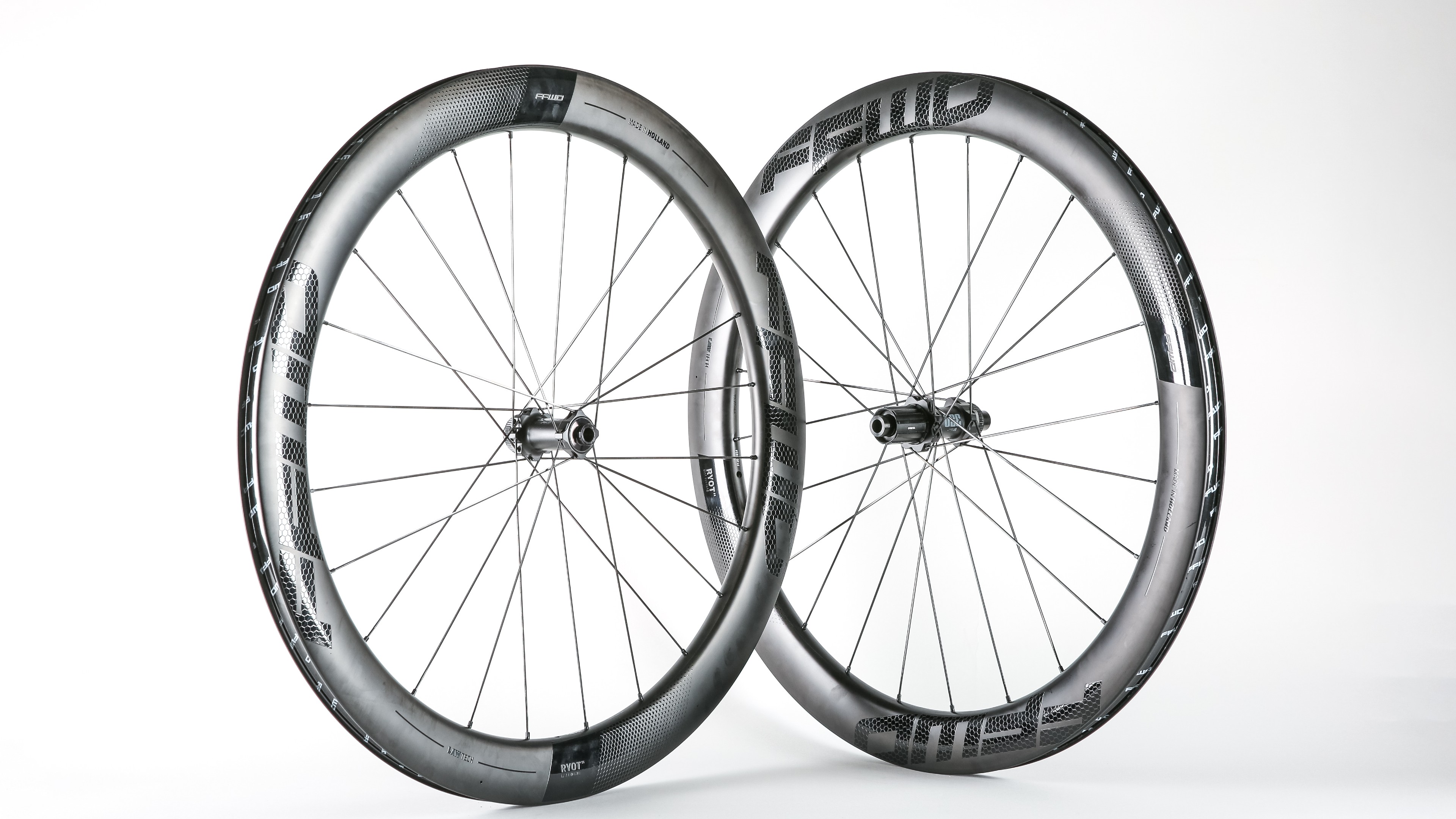
The FFWD Ryot 55s have a high-end look, feel and even sound. They are built in Holland to a high standard and, priced at £1,374 they appear to be a cut above the £1,000/$1,000 category. They come with big aero claims. But with their weight of just over 1,700g they are 200g heavier than they should be for the money and at this price we'd expect DT Swiss 240s hubs - which are available in a build that costs £1,624 - rather than the reliable but fairly basic 350.
-
+
Fast feeling
-
+
Great handling
-
+
Smart looking
-
+
Made in Holland
-
-
Higher weight compared to competitors at this price
-
-
Basic hubset
You can trust Cycling Weekly.

Dutch brand FFWD doesn’t appear to be targeting the very competitive £1,000/$1,000 road bike wheel category with the Ryot 55s, unlike the Zipp 303S, the Hunt Aero 50 and the Vel 50 RSL, which are lighter than the FFWDs as well as cheaper. So what, apart from extra grams, do you get for the £1,374 of the FFWD Ryot 55?
FFWD Ryot 55: construction
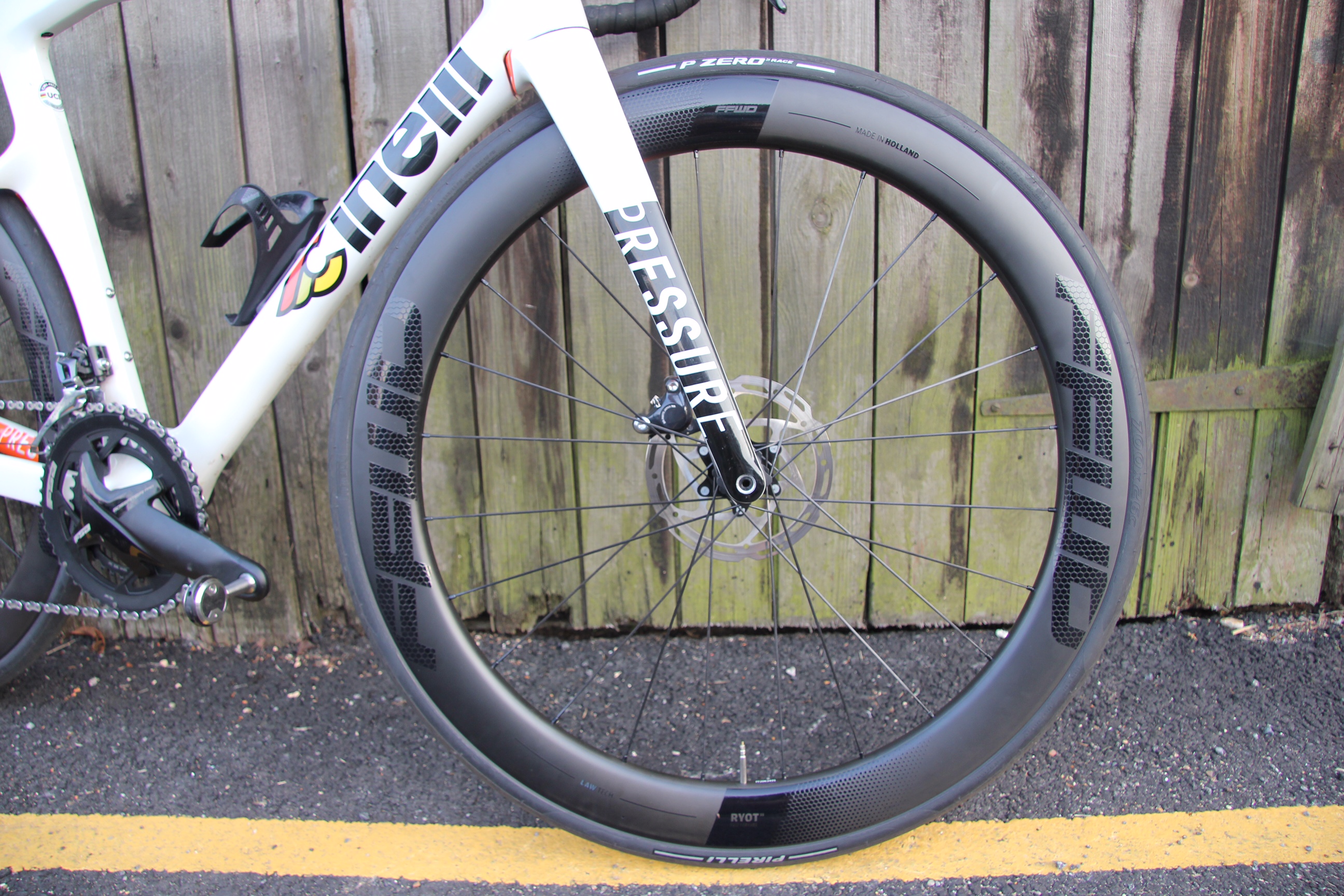
FFWD makes some big claims for the Ryot 55 wheels, perhaps the biggest being that: “We’re now introducing the fastest road wheel out there, the Ryot 55! It outperforms its competitors in real world conditions proven in wind tunnel tests. Compared to most common competitors the wind tunnel tests showed an average advantage between 1,5 and 2,7 watts. Ryot 55 sets the standard in aerodynamic road wheels.”
FFWD doesn’t supply a white paper as such but includes a basic graph illustrating how the Ryot 55 outperforms the Zipp 404. Fulcrum Wind 55 and Roval CL50 at 0-10 degrees of yaw. As ever, it’s impossible for us to verify this, so make of it what you will.
FFWD has a name for its rim shape: ‘LAW’, which means ‘laminar airflow wing’. Compared to the common older V-shaped rim profile it has a U shape with the sides of the U bulging from a wide 21mm internal rim to a maximum 31mm below the tyre - it’s certainly more like the aerodynamic teardrop shape of a wing than earlier designs.
This profile updates FFWD’s older F6 rim’s DARC profile. That rim was designed for a 23mm tyre; according to FFWD the LAW rim is 5 watts faster using 25mm tyres that have an effective width of 28.2mm on the rim. Our 26mm Pirelli P Zero Race tyres measured 27.9mm on the rim.
FFWD doesn’t specify what sort of carbon the Ryot 55 uses but the finish is very slick, with stealth decals and a high-quality look.
These are tubeless-ready rims but not hookless - FFWD says it doesn’t want to limit tyre compatibility. This also means higher pressures are possible if you’re running narrower tyres - you’re not limited to 72psi. Surprisingly the minimum width for compatible tyres is a skinny 23mm while the maximum is 42mm - so a good range.
The latest race content, interviews, features, reviews and expert buying guides, direct to your inbox!
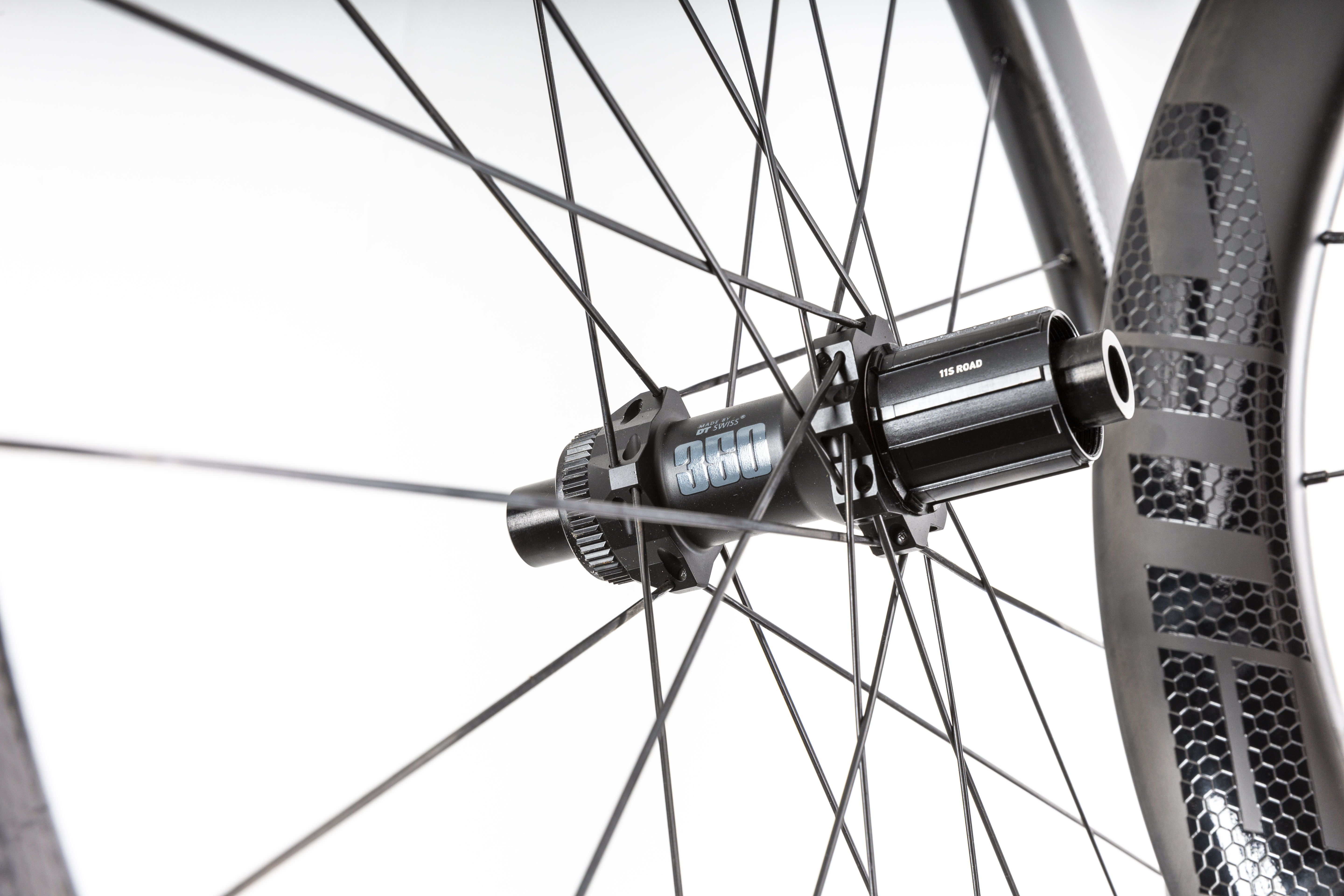
The hubs are DT Swiss 350s, which are a lower-spec hub than the DT 240s of the cheaper Vel 50 RSL.
The Ryot 55s are also available with the DT 240s hub at £1,624 but we'd really prefer to see them in the £1,374 version we have on test if they were to compete on price.
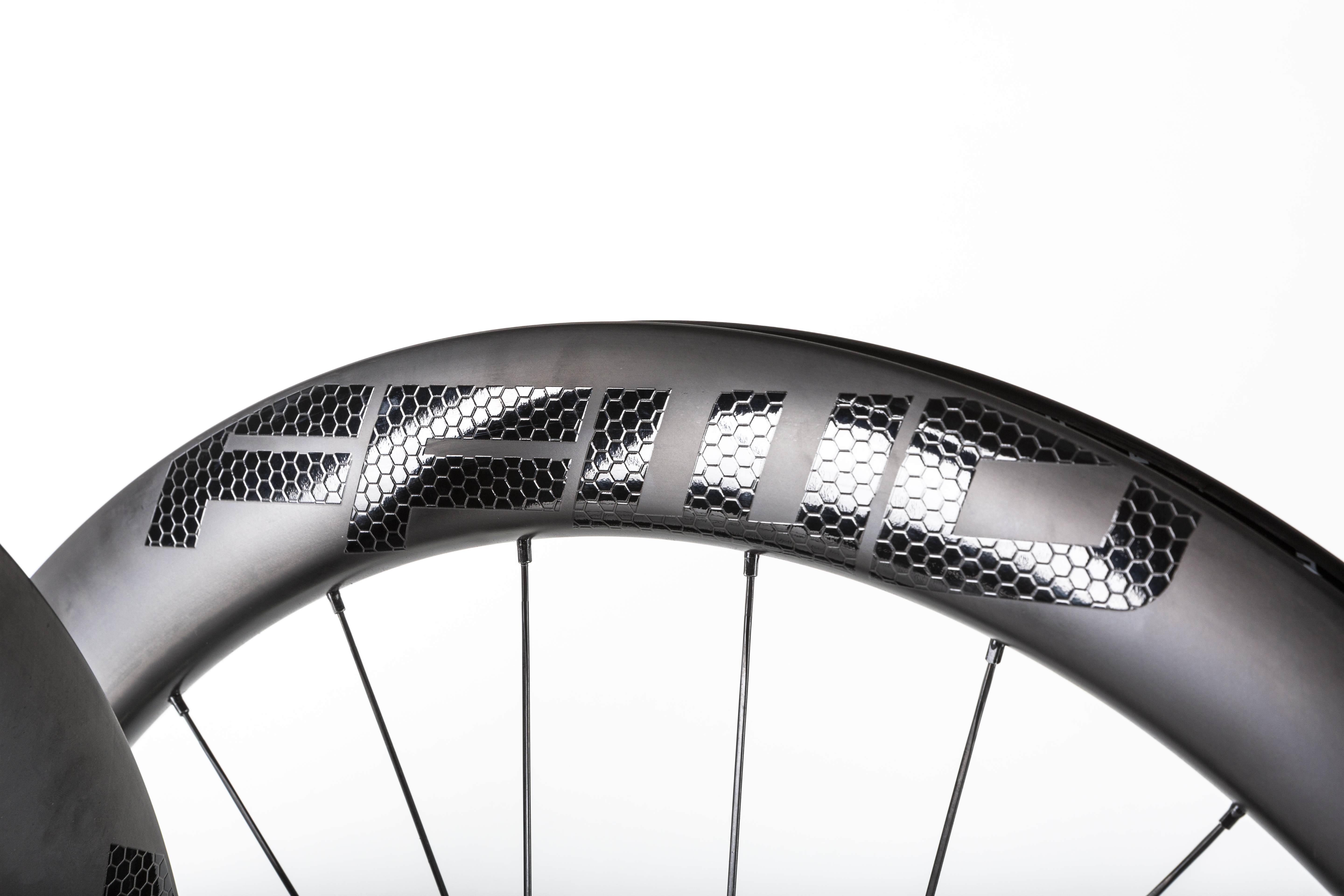
Each hub is laced to the rim with 24 straight-pull spokes per wheel - DT Aerolite on the front and DT Aerocomp at the rear. Both are bladed but the Aerocomps are heavier and therefore supply better stiffness at the rear.
The spoke tension is pretty high at 1,100N - at the upper end of bike-wheel spoke tension. This won’t add to lateral stiffness but it will supply good strength. The spoke nipples are not concealed so home truing is straightforward (though none was necessary during our test period).
The weight at 1,732g is quite a bit higher than the claimed 1,620g on the spec sheet (although FFWD's website does also say 1,700g).
The FFWD Ryot 55 wheels are very nicely presented, coming with a double wheel bag, rim tape fitted tubeless valves and some little stickers - but no lockrings.
The ride
I tested the FFWD Ryot 55s with Pirelli P Zero Race clinchers in a size 26mm. If you’re running narrower clinchers like these (by modern standards) I’m pleased to report that they go over the rim wall very easily with thumbs only. They pinged into place quite loudly, suggesting they need a bit of pressure before the bead goes up onto the shelf.
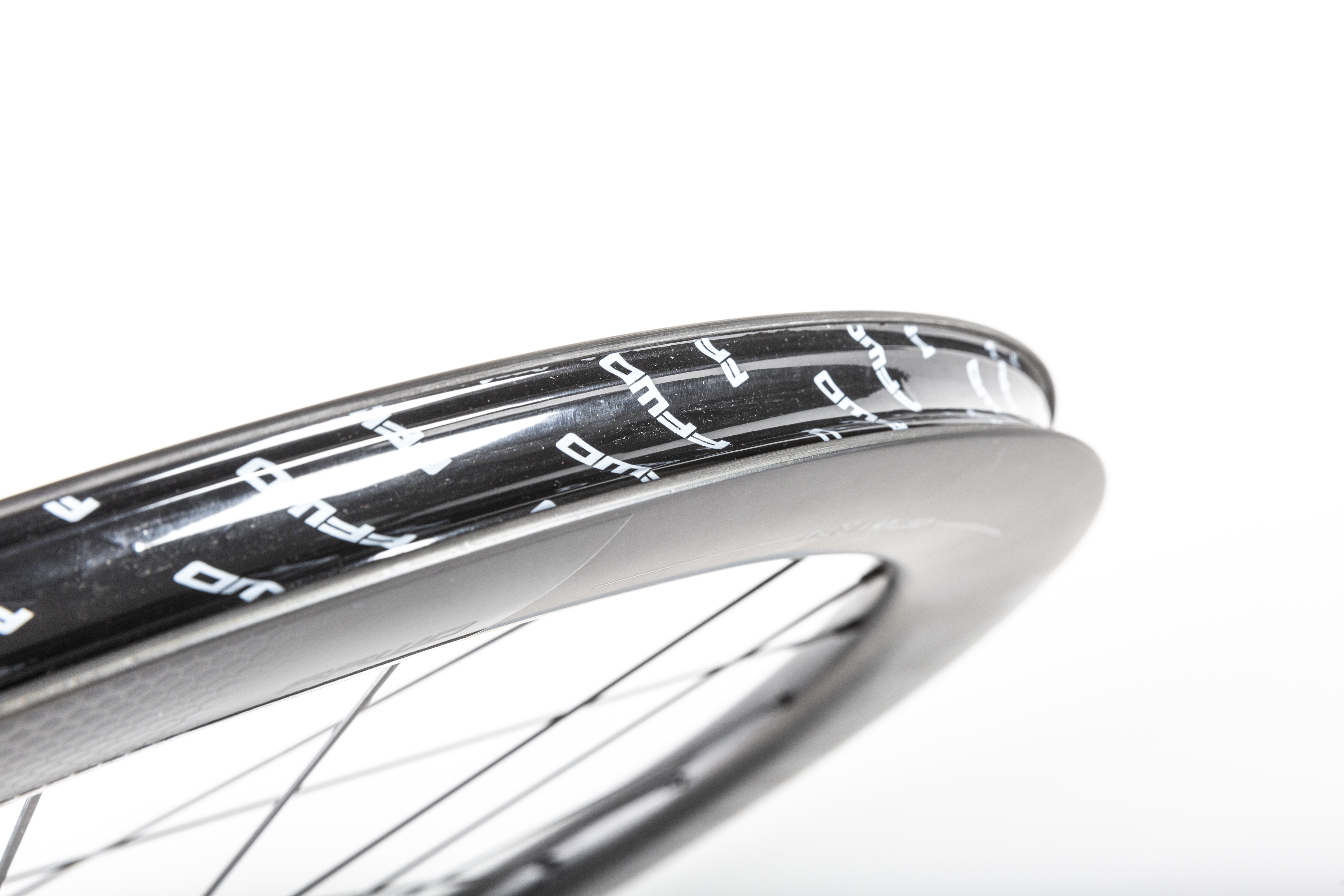
Looking closely at the tubeless rim bed profile, the shelf slopes sharply back down towards the rimwall, which looks good for keeping a tubeless tyre seated if it punctures and doesn’t seal - and you won’t have a compressor with you of course - but it may need a decent blast to get it up there in the first place.
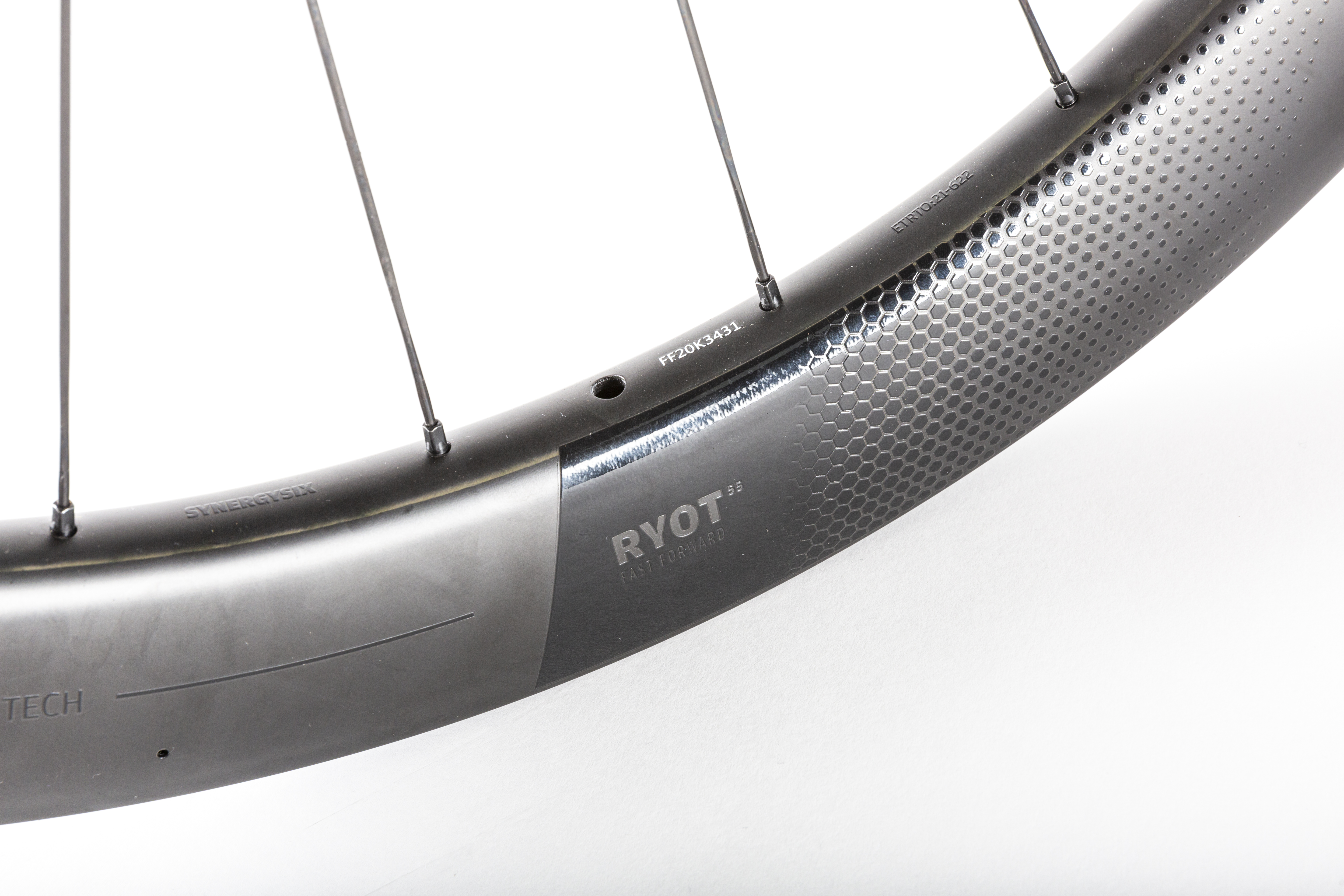
The 26mm Pirellis measured 27.9mm once mounted, with the sidewalls lining up with the tops of the rim walls very neatly.
Although the FFWDs were the heaviest in our grouptest, they didn’t feel like it - I put this down to the good level of stiffness in the rear wheel that makes them feel very responsive on climbs and accelerations out of the saddle.
The DT Swiss 350 hub is lower down the pecking order compared with the Vel’s 240s but pickup is really crisp and the menacingly muted freewheel noise passes my hub soundcheck.
The rims sounded great too: on the flat they made an impressive whooshing - something not as common any more with the latest carbon rims. The modern Campagnolo Boras for example are very - almost disappointingly - quiet by comparison.
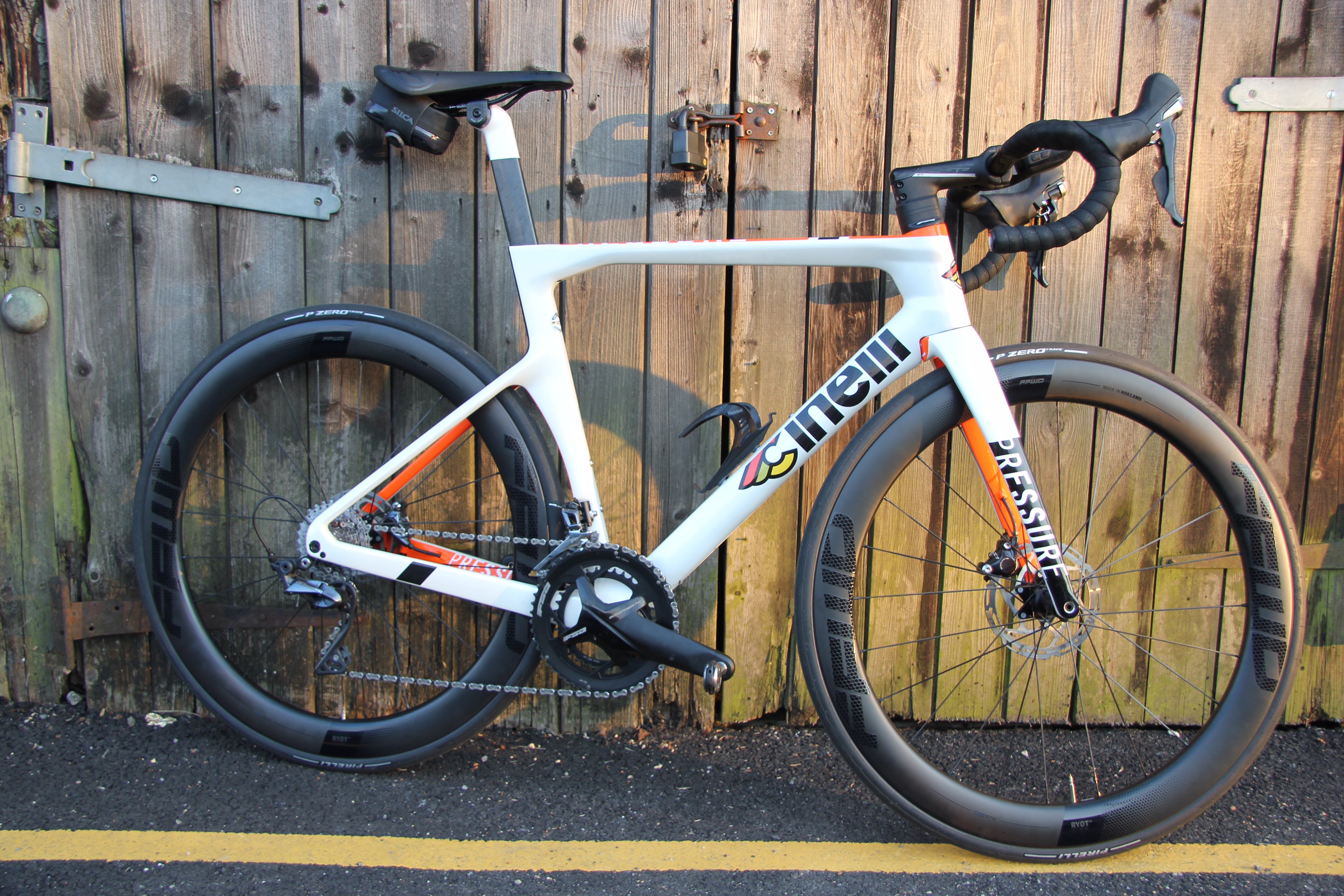
Not only did the FFWD Ryot 55s sound fast, they were fast. They nicely boosted my average speed compared to a set of Vision Team 30 wheels that I swapped out on my Cinelli Pressure test bike (which are admittedly fairly low end).
With the deepest rim in our grouptest at 55mm I was keen to find out how they handled in crosswinds: on a fast, slightly downhill section they felt more than stable enough for me to adopt the illegal aerobars/puppy paws position without worry about the front wheel being blown off line. The Ryot name suggests they might be a handful but it's a misnomer: they are the epitome of cool, calm and composed.
They also helped me to a Strava PR on another long, shallow descent.
Deep-section wheels - with the exception of very light ones such as the Zipp 353NSW - are rarely comfortable over rough terrain and the FFWDs, especially with their high spoke tension, weren’t the most forgiving on potholed descents. If I'd been using bigger tyres at lower pressures (the 26mm Pirellis were inflated to 100psi) it might have been a slightly different story, but for the majority of my riding I still prefer the lower weight and more direct feel of narrower tyres inflated to higher pressures (old school I know).
I would say the FFWD Ryot 55s are at their best on fast, smooth, flattish roads with narrower tyres, which is probably the sort of riding they were designed for.
Value and conclusion
On paper compared with the Hunt Aero 50, the Zipp 303S and Vel 50 RSL the FFWD Ryot 55s don’t look like great value - mainly because they give away quite a few grams to those lower-priced wheels. They were nearly 200g heavier than the next heaviest in our grouptest (the Vels and the Hunts) and that’s a significant amount even taking into account the FFWD Ryot’s rim being 5mm deeper.
Additionally the Vel 50 RSL gets the better DT Swiss hub - despite being £375 cheaper.
That said, although I can’t confirm whether these wheels outperform their competitors, as FFWD claims, they seemed to slice through the air very efficiently, I liked the look, the feel and even the sound of them and my overall experience with them was very positive.
The FFWD Ryot 55 wheels are great fun to ride, pepping up a bike very nicely if you’re buying them as an upgrade wheel. The finish is great, build quality is high and they’re made in Holland. But if you’re really scrutinising your price to performance ratio there are better-value wheels out there.
| FFWD Ryot 55 wheelset | Header Cell - Column 1 | Header Cell - Column 2 |
|---|---|---|
| Rim depth | 55mm | Row 0 - Cell 2 |
| Internal rim width | 21mm | Row 1 - Cell 2 |
| External rim width | 31mm | Row 2 - Cell 2 |
| Hubs | DT Swiss 350 | Row 3 - Cell 2 |
| Spokes | 24 DT Aerolite front/24 DT Aerocomp rear | Row 4 - Cell 2 |
| Weight | 1,732g (with rim tape) | Row 5 - Cell 2 |
| Price at time of review | £1,374 | Row 6 - Cell 2 |
| Contact | www.extrauk.co.uk | Row 7 - Cell 2 |
Simon Smythe is a hugely experienced cycling tech writer, who has been writing for Cycling Weekly since 2003. Until recently he was our senior tech writer. In his cycling career Simon has mostly focused on time trialling with a national medal, a few open wins and his club's 30-mile record in his palmares. These days he spends most of his time testing road bikes, or on a tandem doing the school run with his younger son.
